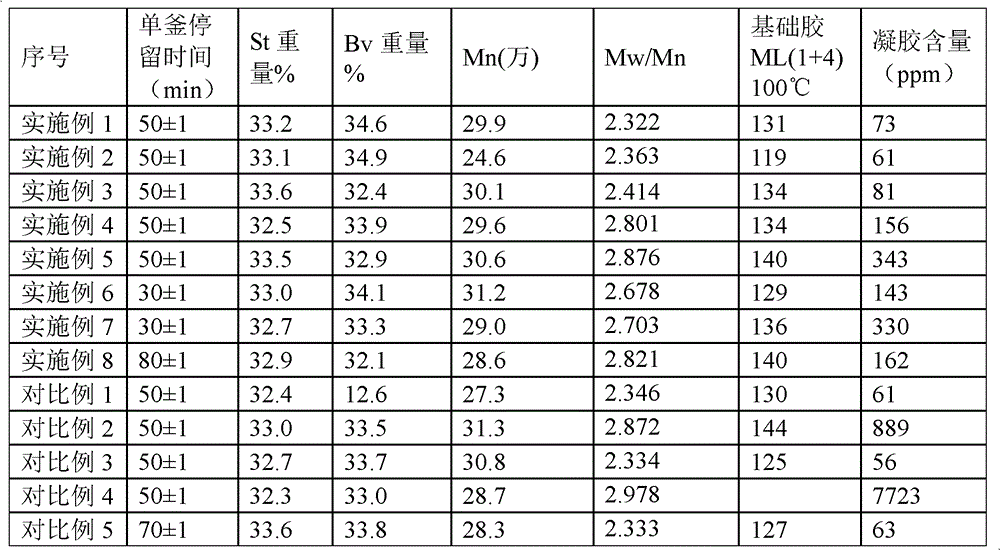1,3-conjugated diene/monovinylarene copolymer and its continuous polymerization production method
A technology of monovinylarene and conjugated diene, which is applied in the production field of 1,3-conjugated diene/monovinylarene copolymer and its continuous polymerization, and can solve the problems of high Mooney viscosity and monomer conversion rate Low continuous production efficiency, extended residence time and other issues, to achieve the effect of high Mooney viscosity
- Summary
- Abstract
- Description
- Claims
- Application Information
AI Technical Summary
Problems solved by technology
Method used
Image
Examples
Embodiment 1
[0041] The continuous polymerization process was adopted in the experiment, and the reaction was carried out in two 5-liter polymerization reactors connected in series. Under the protective atmosphere of high-purity nitrogen, the pressure in the polymerization kettle is controlled at 0.7Mpa (gauge pressure), and 700g of cyclohexane and normal hexane (cyclohexane and normal hexane, weight ratio is 88:12) are added to the first kettle, and the After the jacket is warmed up to 100°C, continuously add cyclohexane and n-hexane mixed solvent and monomer in the aforementioned weight ratio of 25°C to the first kettle, and the feed rate of various reaction materials is: mixed solvent (cyclohexane and n-hexane alkanes, the weight ratio is 88:12) 3538g / h, 1,3-butadiene 669g / h, styrene 329g / h, ethyl tetrahydrofurfuryl ether 1.810g / h, n-butyllithium 0.2201g / h and 1,2-butadiene 0.2495g / h. The reaction pressure of each polymerization tank is 0.6-0.8Mpa, the reaction temperature is 125°C, an...
Embodiment 2
[0043] Using the same experimental conditions as in Example 1, the only difference is that the amount of n-butyllithium added is 0.2661g / h, and the data of the measured samples are shown in Table 1 and Table 2.
Embodiment 3
[0045] Using the same experimental conditions as in Example 1, the only difference is that the amount of 1,2-butadiene added is 0.1996 g / h. The measured data of the samples are shown in Table 1 and Table 2.
PUM
 Login to View More
Login to View More Abstract
Description
Claims
Application Information
 Login to View More
Login to View More - R&D
- Intellectual Property
- Life Sciences
- Materials
- Tech Scout
- Unparalleled Data Quality
- Higher Quality Content
- 60% Fewer Hallucinations
Browse by: Latest US Patents, China's latest patents, Technical Efficacy Thesaurus, Application Domain, Technology Topic, Popular Technical Reports.
© 2025 PatSnap. All rights reserved.Legal|Privacy policy|Modern Slavery Act Transparency Statement|Sitemap|About US| Contact US: help@patsnap.com



